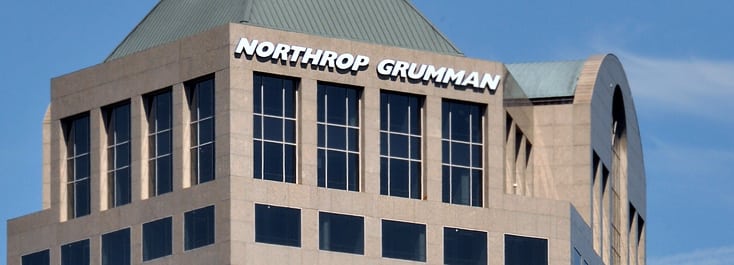Northrop Grumman Posts 1Q Growth in All Four Segments

Northrop Grumman headquarters in Falls Church, Virginia. Photo: Northrop Grumman.
Northrop Grumman released its First Quarter (Q1) 2020 results on Wednesday, reporting a sales of $8.6 billion, a 5% increase from the same time period in 2019. Net earnings increased 1% to $868 million, or $5.15 per diluted share, compared to Q1 2019. CEO Kathy Warden said in a call with investors on Wednesday that the company did not experience a material impact from the COVID-19 pandemic in Q1.
All four segments saw sales increases, but the Space Systems segment reported the greatest increase in Q1 — logging $1.9 billion in sales, up 8% from the same time period in 2019. Operating income for Space Systems also increased 6% in Q1, to $199 million. Lockheed Martin said that Space saw higher sales, which partially offset lower sales in Launch & Strategic Missiles. Space Space sales were driven by higher volume on restricted programs, Next Generation Overhead Persistent Infrared Radar (Next Gen OPIR) and the Arctic Satellite Broadband Mission (ASBM) program.
Northrop Grumman slightly adjusted its 2020 guidance, predicting Full Year (FY) sales between $35 billion and $35.4 billion. At the end of January, the company predicted sales of between $35.3 billion and $35.8 billion. According to 2020 guidance, the company expects the most significant adverse impacts from the pandemic to come in Q2 of this year.
Addressing the pandemic, Warden said there has not been a material supply chain disruption. The company is advancing $30 million per week to small and mid-size businesses in its supply chain, and expects these advances to total more than $200 million.
“Our global supply chain team continues to actively engage with our suppliers to address issues and find new opportunities to help them,” Warden said.
Warden said Northrop Grumman has implemented telecommuting when possible, staggered shifts, health monitoring, and social distancing to keep its employees safe. The company has also produced headbands and face shields for hospitals.